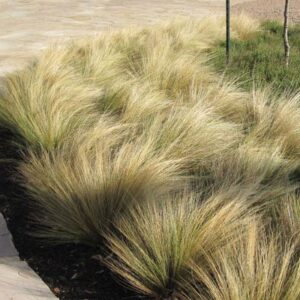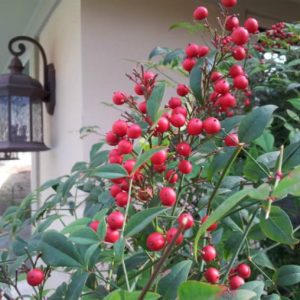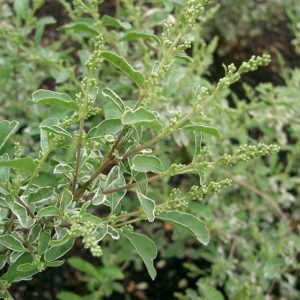Could you be harboring freeloading foliage and not even know it? Don’t aid and abet these unsavory visitors.
Like most things, too much of anything can quickly become a problem. In our series for beginning gardeners — or Texas transplants — we explore another category of plant that plagues: Invasives.
We’ve talked about the thorny threats, but this time we’ll cover plants that can’t take a hint.
 Starting off with one of the more lamentable invasives, Mexican feathergrass is a gorgeous turfgrass with a horrible secret. Native to Big Bend and Jeff Davis counties, this plant will eagerly spread beyond if given the chance — known to some of our conservation staff as a grand escape artist in their gardens. In fact, it’s even fire prone and can crowd out native grasses (pdf). Not loved by livestock either.
Starting off with one of the more lamentable invasives, Mexican feathergrass is a gorgeous turfgrass with a horrible secret. Native to Big Bend and Jeff Davis counties, this plant will eagerly spread beyond if given the chance — known to some of our conservation staff as a grand escape artist in their gardens. In fact, it’s even fire prone and can crowd out native grasses (pdf). Not loved by livestock either.
 Also known as heavenly bamboo or sacred bamboo, this plant isn’t bamboo at all and some of the effects it can have on birds aren’t heavenly either. It’s a member of the barberry family and the berries are toxic to birds and mammals. When food supplies run short in winter, this can be detrimental to desperate birds. Cedar waxwings, in particular, are in danger because they eat so many berries at once. These are also toxic to cats. But don’t just take it from me, our vice president of Conservation once had trouble with nandina.
Also known as heavenly bamboo or sacred bamboo, this plant isn’t bamboo at all and some of the effects it can have on birds aren’t heavenly either. It’s a member of the barberry family and the berries are toxic to birds and mammals. When food supplies run short in winter, this can be detrimental to desperate birds. Cedar waxwings, in particular, are in danger because they eat so many berries at once. These are also toxic to cats. But don’t just take it from me, our vice president of Conservation once had trouble with nandina.
This thistle is highly competitive and causes chewing disease in horses. It grows quickly, has a deep taproot and seeds like nobody’s business. In fact, even when rainfall is normal this plant can cause drought conditions for native species if there’s an infestation. This plant is listed as a noxious weed in Arizona and New Mexico, and we can see why.
With a name like catclaw, you’d think this plant would be thorny. That isn’t the case here. But this plant will grasp anything and grow densely, smothering trees and whatever else it gets its claws into. While it’s drought tolerant and the flowers beautiful, this plant spells trouble for whatever it lands on.
 Used by many homebuilders as an instant evergreen hedge, this plant has gone above and beyond in the worst sense. There is no greater escape artist than ligustrum, which replaces all your favorite native plants in woodlands with itself. Ligustrum highlights the problem we see with most invasive plants, where they survive and spread more rapidly than our native plants — and choke them out. Ligustrum adapts to all sorts of light conditions and can spread so well because it reproduces not only by seed, but by suckers from the roots as well.
Used by many homebuilders as an instant evergreen hedge, this plant has gone above and beyond in the worst sense. There is no greater escape artist than ligustrum, which replaces all your favorite native plants in woodlands with itself. Ligustrum highlights the problem we see with most invasive plants, where they survive and spread more rapidly than our native plants — and choke them out. Ligustrum adapts to all sorts of light conditions and can spread so well because it reproduces not only by seed, but by suckers from the roots as well.
As always, it’s important to check your local resources to see what plants are native to your area. There are many acceptable alternatives and make sure to familiarize yourself with plants that are considered invasive to Texas. Have fun and happy gardening – just make sure you aren’t planting any guests that won’t leave when you ask them to!




